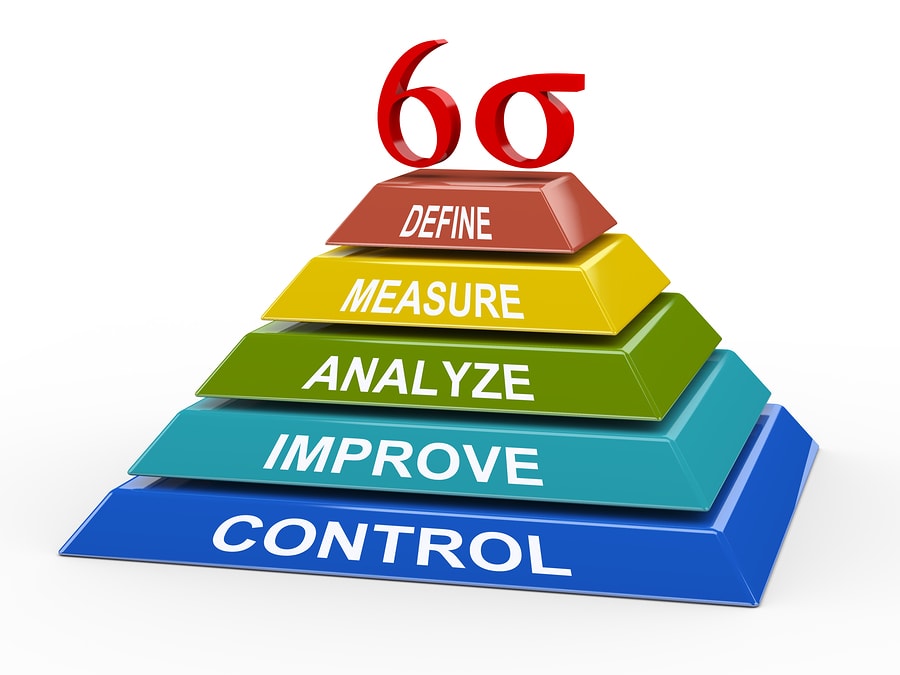Are you looking to get a Six Sigma Green Belt Certification? So you must know that Six Sigma is a methodological strategy by which errors in a company’s current processes and plans are identified and strategies to rectify the same are formulated. It is a fact-based technique, involving a lot of data handling, which provides scientific results for cost-cutting and reduction in waste of resources. It enables an individual to execute this methodical strategy.
Attend our 100% Online & Self-Paced Free Six Sigma Training.
Today, many organizations, large and small scale, are applying Six Sigma to ensure improved, faster and cheaper services to their consumers without compromising on the quality quotient.
Implementation of Six Sigma requires professionals who have been trained in the program and have had exposure to practically applying the concepts in different organizations across industries to know how to go about its application on the job. Generally, the first step here is Six Sigma Green Belt certification.
Six Sigma Green Belt Certification Training
Six Sigma Green Belt certification training or Lean training course normally revolves around D-M-A-I-C framework. You can learn the basics of Lean Six Sigma and Lean Six Sigma Green Belt Certification with the help of a free Lean Six Sigma course. The list of topics across D-M-A-I-C framework, that are normally covered in Six Sigma Green Belt training are as follows:
- Change Management
- Project charter, Voice Of the Customer (VOC) to Critical-To-Quality (CTQ), KANO Model, SIPOC diagram
- Process capability, Segmentation and Stratification, Sampling strategy
- Measurement System Analysis
- Box Plot, Rolled Throughput Yield (RTY), Process Map
- Pareto, Concept of LEAN, Hypothesis Testing
- Correlation, Mistake-proofing, FMEA
- Process Management Charts, Statistical Process Control (SPC)
- Fishbone Diagram, Data Collection Plan (DCP), Normality study
- Run Chart, Control Chart, Regression

Normally, Master Black Belts are responsible for imparting knowledge to help Green Belt level and Black Belt level learners in improvising on their projects. Master Black Belts apply their skills in an organization by coaching other employees and helping them achieve the Six Sigma Green Belt Certification and Six Sigma Black Belt certification without the company having to spend on training separately.
Check our Six Sigma Training Video
3 Qualities For Getting The Six Sigma Green Belt
For the purpose of acquiring the certification, aspirants must;
- Spend at least 30% to 40% of their production time on process improvement initiatives or activities
- Be able to solve quality related issues
- Work on Six Sigma, LEAN, KAIZEN or other quality improvement projects

American Society for Quality (ASQ) and International Association for Six Sigma Certification (IASSC) are globally recognized leaders in offering Six Sigma Green Belt certification. As a professional association, ASQ or IASSC helps advance the professional development, credentials, knowledge and information services, membership community, and advocacy on behalf of its more than 2,00,000+ members worldwide.
Job Role Post Six Sigma Green Belt Certification
According to the potential of the participant, the certification offers the following roles post the completion of the course:
- Six Sigma Green Belt – Project Originator
- Six Sigma Green Belt – Project Leader
- Six Sigma champion in local area
The nature of duties & responsibilities, post Six Sigma Green Belt certification, may take the following form:
- Lead ‘Six Sigma improvement’ project’s team
- Analyze and solves quality problems
- Participate in an improvement project
- Validate the measurement system
- Work on projects within own functional area; on a part-time basis
- Improve team facilitation skills
- Developing Project charter and SIPOC (Supplier, Input, Process a, d Output) diagram for their project
Professionals carrying Six Sigma Green Belt certification will be able to apply learned tools, in an improvement framework like D-M-A-I-C, to everyday work problems. They will also be able to assist Six Sigma Black Belts in Six Sigma teams. They will also work on improvement projects, on a part-time basis, to provide a measurable improvement to the enterprise.
Candidates that have a thorough knowledge of the Six Sigma method and procedure at the Green Belt level have a distinct advantage when searching for a career. Hiring managers do not only look for the title of Six Sigma Green Belt certification. They always seek candidates carrying the knowledge and practical expertise in Six Sigma methodology. Typical jobs include Compliance structural engineer, lead manufacturing engineer, operating systems specialist, business process analyst, project engineer, and senior IT project manager.

General Course Outline
This is the general outline of a course:
- Statistical and other analytical methods for identifying and understanding sources of variation
- History of Six Sigma
- Problem solving
- Basic statistics and displays of data
- Process mapping and measurement techniques
- Six Sigma tools and techniques
- DMAIC process improvement roadmap
- How to establish customer requirements
- How to measure and quantify process performance
Six Sigma Green Belt Certification Program – Phase Description
The course consists of 5 phases:
- The DEFINE Phase of the DMAIC framework is constructed to introduce the fundamentals of Lean and Six Sigma
- The MEASURE Phase of the DMAIC framework is constructed to introduce important Lean Six Sigma tools for characterizing your business issues
- The ANALYZE Phase of the DMAIC framework is constructed to introduce important Lean Six Sigma tools for isolating critical factors
- The IMPROVE Phase of the DMAIC framework is constructed to introduce important Lean Six Sigma tools for properly controlling solutions
- The CONTROL Phase of the DMAIC framework is constructed to introduce important Lean Six Sigma tools for properly controlling solutions
11 Objectives of Learning
During Six Sigma Green Belt certification course, participants will be able to develop:
- Understanding of the concepts, implementation & objectives of Six Sigma
- Ability to use a structured approach to process improvement
- Ability to use DMAIC (Define, Measure, Analyze, Implement and Control) methodology
- Skill to predict, prevent and control defects in a process
- Understanding of the elements of waste
- Skills to achieve sustainable quality improvement through process improvement
- Understanding of the tools of process discovery
- Understanding of variation in processes
- Skills to reduce variation in processes and achieve predicted outcomes
- Ability to identify, measure and analyze process potential
- Usage of inferential statistics
- Usage of hypothesis testing
- Understanding when to use which Six Sigma methodology
- Ability to use Capability Analysis to control processes
- Knowledge of the interdependence of Lean tools
- Skills to prevent, identify and control defects
- Understanding and use of statistical process control
- Skills to train, document, monitor, respond and align systems
Author: Nilesh Bhanushali



3 thoughts on “Six Sigma Green Belt Certification – All Aspects of 6σ Certification”
Comments are closed.